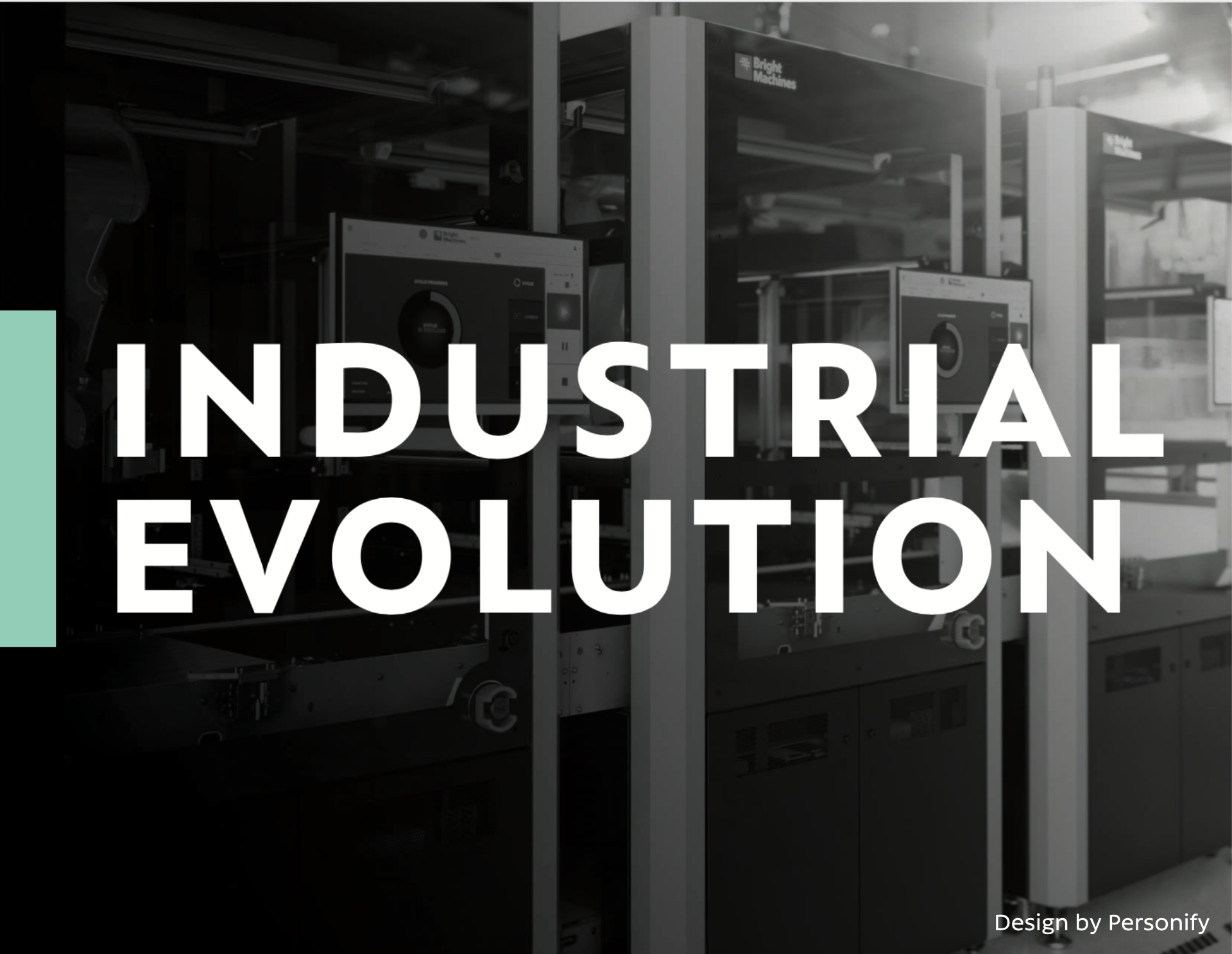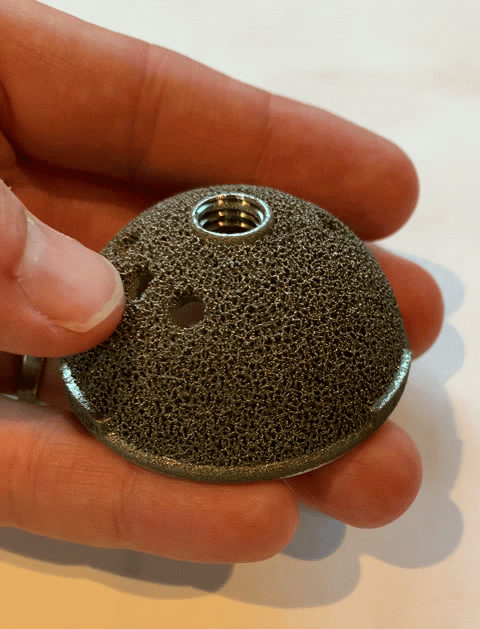The modernization of manufacturing processes, and the now-obvious fragility of supply chains stretched thinly around the world, have turned attention to digital solutions meant to make industrial operations more resilient.
One of these innovations is additive manufacturing (AM), referring to the digitally driven, layer-by-layer fabrication of parts, without tooling. In recent years, AM’s ability to produce high-value parts with enhanced performance and functionality has driven wider adoption in industry, and much investment activity.
Furthermore, AM’s ability to simplify the creation of designs that traditionally require multiple parts from different suppliers make it a potential solution for challenges raised by the recent disruptions to global supply chains.
In AM, three-dimensional parts are created from computer-aided design (CAD) models that instruct a printer to form objects from a generic feedstock — which can be polymers, metal, ceramic, composites, or even a biological material. Metal AM, in particular, is of growing interest for digitally manufacturing high-performance parts out of titanium, aluminum, and other alloys for use in aircraft engines, medical devices, and even some consumer products. There are multiple approaches to metal AM, such as using powerful lasers to fuse powdered metal, or inkjet printing to bind powder, followed by high-temperature consolidation called sintering.

Someone who has watched the evolution of AM is A. John Hart, a professor of mechanical engineering at the Massachusetts Institute of Technology, where the technology first called “3D printing” was invented by Professor Ely Sachs and colleagues. Hart directs MIT’s Center for Additive and Digital Advanced Production Technologies, the Laboratory for Manufacturing and Productivity, and the Mechanosynthesis Group — all of which aim to advance the science and technology of manufacturing.
John’s research continues the legacy of innovation in 3D printing at MIT. And over the years, his teaching has put him in touch with extremely sharp and entrepreneurial students who share his vision for increasing AM’s adoption in industry as a way of making manufacturing more resilient and sustainable.
One of those students was Martin Feldmann, who started working on his master’s degree in manufacturing at MIT in the fall of 2013. That’s when the two first met — and it was also John’s first semester as a professor at MIT. He taught a course on AM for the first time, and Martin became one of his students.
As they got to know each other, they discovered a shared interest in understanding what was preventing 3D printing from happening at scale in industry. Then, in 2015, they went on to co-found VulcanForms, which has been quietly building a fully scalable, industrial metal AM solution. With Martin as the company’s president and CEO, VulcanForms aims to commercialize the most powerful and advanced metal AM system in the world.
Given John’s blend of academic expertise and entrepreneurial perspective, we asked him to talk about the current state of AM, how this innovation fits into the industrial evolution of manufacturing, and where he sees metal AM heading over the next decade.
Is there a difference between 3D printing and additive manufacturing?
You could use them interchangeably. But to be distinct, I often say that 3D printing is the process by which you form the part, and the machine that does that is the 3D printer. But after the part is printed, there’s often additional steps required. For example, the printer might create parts in a stack or in an array, and then the parts need to be removed, and possibly machined, heat treated, or polished.
Now, I can define the process of additive manufacturing as the end-to-end sequence where the first step is 3D printing, but then also includes post-processing such as machining, with the goal of producing the finished part.
What are the advantages of AM over traditional forms of manufacturing?
Additive manufacturing allows for a much broader design space. You have a lot more freedom as to the geometries that you can create — and geometry often is a driver of function. So a printed part can be stronger and lighter weight, or it could better tolerate heat through embedded cooling channels, for instance. Geometries that are extremely difficult, if not impossible, to create via conventional techniques become quite straightforward using AM.
Another advantage is flexibility. The idea of on-demand production is really compelling: I could have parts that are digitally customized to each individual person. And if you understand 3D printing as a manufacturing process, there’s no difference if you print 100 parts and each one is unique, a little bit different, or each one is the same. You pay no extra cost for that, and that’s a really big deal.
A third advantage is supply chain simplicity. Think of the aerospace industry: massive supply chains, huge lead times. You can do a lot more in less time if you have a shorter supply chain. So, by digitizing the build process, you simplify your operations logistically and financially.
Is the impact of metal AM in industry still in its infancy? If so, what would a more “mature” stage look like?
Yes, additive manufacturing is still in its infancy. But the technology and readiness are progressing. To me, a sign of maturity would be the existence of production factories where metal additive manufacturing is the primary process by which parts are formed — and on the scale of hundreds of thousands, or millions, of components per year for high-value applications.
There is a compelling vision for industrial mass production of metal parts for the world’s most demanding industries and applications, that would be enabled by metal AM. It’s a means to the end goal of digitizing the production of high-value, complex components for various applications: jet engines, medical implants, spacecraft, et cetera.
Another sign of “maturity” would be the mass production of metal parts, available as a service offered across different industries.
How long will it take us to get there, and more importantly, do you feel this move toward additive manufacturing is inevitable?
When we look back, we may think it was inevitable. But what VulcanForms and its peers are doing will fundamentally change the trajectory of AM in the next few years. As an industrial society, broadly speaking, there’s an imperative on digital manufacturing. The symbiosis of automation, software and materials is a very, very strong force that will define the next generation of manufacturing.
That said, if you break down any new machine or manufacturing process, you realize it rests on the shoulders of other technologies that helped you get there. We at VulcanForms and other leading-edge companies in this space couldn’t build our 3D printers if we didn’t have lasers of a certain type and cost, or the ability to build high-performance machine controls.
So, yes, I think it was inevitable. But there are certain key technologies that drive the rate of adoption and enable AM to reach industrial scale and quality.
What would be a good example of a product or component made by metal AM that would convey how revolutionary this approach is?

Let’s take the acetabular cup, which is a component of a hip implant that goes into the pelvic bone. Acetabular cups are traditionally made by machining of a titanium alloy. Then, several years ago, it became clear that AM can create a very intricate, porous surface on the cup. That surface is shown, clinically, to more quickly and more strongly integrate with the bone after surgery. After someone has any joint replacement surgery, it takes time for the bone implant interface to gain its strength, and this strength is important to the rate of recovery and to the durability of the implant.
There are hundreds of thousands of these acetabular cups in humans around the world, maybe even more than a million. It’s a great example of a high-value product that is enabled, in terms of its function, by metal AM. Many more applications like this already exist, and even more will emerge in the future.
Would you say metal AM is more of an evolution of traditional industrial production, or is it an unprecedented innovation?
Ultimately, it’s a mix of both. In order to bring AM to scale, we must leverage a lot of manufacturing expertise, infrastructure and know-how that has developed over decades and centuries. Whatever you say that involves — materials, machine tool technologies, surface-finishing processes — that’s where metal AM could be seen as a small variant.
But on the flip side, AM fundamentally new because the idea of digitally building a part from computerized instructions, and a generic feedstock such as a powder, is unlike other manufacturing process before. You’ve always had to either machine away material from a stock piece, or to first make a tool that matches the shape of the part. With AM, you have flexibility to digitally produce any geometry you want, within the bounds of a particular AM machine or process, of course.
That’s important as well. It’s not that AM can make any object imaginable. But the industrial AM equipment of the future will be tailored to make certain types of parts and products, while retaining unprecedented versatility for the users of this equipment and the members of the supply chains in major industries. That is a transformative shift. To implement a design change, we won’t have to worry about changing the tooling or idling the production line.
Changes to production that currently cost a lot of time and money will be as seamless as over-the-air updates sent to your smartphone or to a connected vehicle.
At a system level, digitizing manufacturing processes will also allow us to encode instructions. It’s one thing to give you a 3D model of a hip implant that has all of the surfaces and details. But it’s a completely different thing to give you a digital file or a digital package that tells you how to make it. If I can encode those instructions, I can make manufacturing much more transferable to the machines and production lines that will drive these factories of the future. That intersection where software and hardware meet is crucial, and is also a huge opportunity for innovation and value creation.
How would you describe the current capabilities of metal AM and what more will be possible in the next 10 years?
We’ve seen what’s possible in terms of design capabilities, functionality and new business models — as well as value dimensions that could be achieved, like better hip implants, or simpler, more high-performance jet-engine designs. In the next decade, AM is going to get faster. It’s going to get more cost effective. The properties of materials made by AM are going to get better and more consistent — and we’re going to see new materials. We’re going to come down the curve of cost and climb the curve of adoption.
This underscores the importance of the digital backbone: the software, the sensors, the data pipelines and cloud computation necessary for AM because it’s very data intensive. Companies are learning a lot more about what’s possible, and that is creating pent-up demand for the technology’s implementation at scale.
Follow Eclipse Ventures on LinkedIn and Twitter for the latest on the Industrial Evolution.




